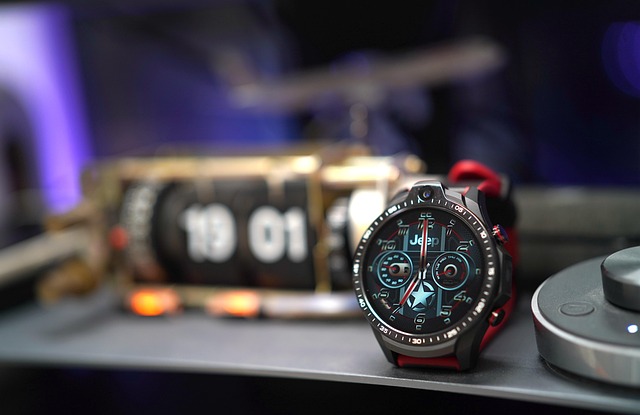Advanced filtration and monitoring technologies are vital for maintaining optimal water quality in remote-controlled aquariums. Integrated systems, combining mechanical, chemical, and biological filtration, offer real-time data access and automated adjustments from afar, ensuring aquatic life's health and ecosystem balance without constant human presence. This digital age innovation streamlines maintenance, promotes sustainability, and enhances the well-being of remote aquarium habitats.
In the realm of aquatic hobbyism, remote-controlled aquariums are gaining popularity, offering convenience and automation. However, maintaining optimal water quality remains a paramount concern. This article delves into integrated filtration and water quality monitoring solutions tailored for these innovative setups. We explore the critical need for precise monitoring in remote aquariums, discuss advanced filtration systems, highlight real-time data collection technologies, and examine sophisticated control mechanisms that ensure thriving aquatic environments.
Understanding Water Quality Monitoring Needs in Remote-Controlled Aquariums
In the realm of remote-controlled aquariums, understanding water quality monitoring needs is paramount for maintaining a healthy and sustainable aquatic environment. These automated systems, designed to allow enthusiasts and professionals to manage aquariums from afar, necessitate precise and continuous water quality assessments to ensure the well-being of fish, plants, and other aquatic life. By integrating advanced filtration systems with real-time water quality monitoring technologies, aquarists can remotely detect and address issues such as pH imbalances, nutrient levels, and temperature fluctuations.
Remote-controlled aquariums present unique challenges due to their reliance on automated mechanisms and the inability for direct human intervention. Therefore, comprehensive water quality monitoring becomes a critical component in optimizing conditions within these systems. This includes regular checks on parameters like dissolved oxygen, hardness, alkalinity, and ammonia levels, all of which play pivotal roles in sustaining a balanced ecosystem. With such monitoring, aquarists can make informed decisions about filtration adjustments, chemical additions, or other interventions from afar, ensuring the remote-controlled aquarium remains a vibrant and thriving oasis.
Integration of Filtration Systems for Efficient Water Treatment
The integration of filtration systems in water treatment processes is a game-changer, especially for maintaining optimal conditions in remote-controlled aquariums. By combining advanced filtering technologies, such as mechanical, chemical, and biological filters, into a unified system, efficient water quality monitoring and purification become achievable. This holistic approach ensures that various contaminants, including particles, bacteria, and dissolved chemicals, are effectively removed or reduced, creating a healthier environment for aquatic life.
In remote-controlled aquariums, where human intervention is limited, an integrated filtration system offers unparalleled convenience and reliability. The remote nature of these setups demands automated, self-sufficient water treatment solutions. This integration enables real-time monitoring of water parameters, allowing for precise adjustments to filter operations based on changing conditions. As a result, the overall water quality remains consistent, ensuring the well-being of fish and other aquatic organisms without constant human oversight.
Real-Time Data Collection: Monitor Aqua Environments Remotely
In today’s digital era, integrated filtration and water quality monitoring systems have revolutionized the way we maintain remote-controlled aquariums. These advanced technologies enable real-time data collection, providing aquarium owners with invaluable insights into their aquatic environments from a distance. By continuously measuring key parameters like pH levels, temperature, and ammonia concentrations, these systems ensure optimal water conditions, even when the owner isn’t physically present.
Through wireless sensors and cloud-based platforms, users can remotely monitor their aquariums’ health and make informed adjustments to filtration settings, feeding schedules, and other maintenance tasks. This not only saves time but also enhances the overall well-being of aquatic life by minimizing disruptions and maintaining a consistent, healthy environment, even in the owner’s absence.
Ensuring Optimal Conditions: Advanced Control Mechanisms for Filtration and Monitoring
In the realm of water quality management, advanced control mechanisms play a pivotal role in ensuring optimal conditions within remote-controlled aquariums. These sophisticated systems integrate filtration and monitoring processes, allowing for precise adjustments to maintain a healthy aquatic environment. By employing real-time data analysis and automated controls, enthusiasts and professionals alike can achieve unparalleled consistency in water parameters such as pH levels, temperature, and nutrient concentrations.
The heart of this integration lies in smart sensors that continuously track key indicators. This data is then processed by centralized control units, enabling remote intervention if necessary. Such mechanisms not only streamline aquarium maintenance but also foster a more sustainable ecosystem. By minimizing manual adjustments and reducing the risk of human error, these advanced controls contribute to the overall health and longevity of the aquatic habitat, making them indispensable for those who strive for excellence in remote-controlled aquariums.
Integrated filtration and water quality monitoring systems are game changers in the realm of remote-controlled aquariums. By combining efficient filtration with real-time data collection, these advanced mechanisms ensure optimal conditions for aquatic ecosystems. This technology allows aquarists to navigate the intricate tapestry of water quality parameters from afar, fostering a bustling yet controlled environment. In light of the above, it’s clear that implementing these integrated solutions is crucial for maintaining vibrant and healthy aquariums, even in the absence of constant on-site supervision.
